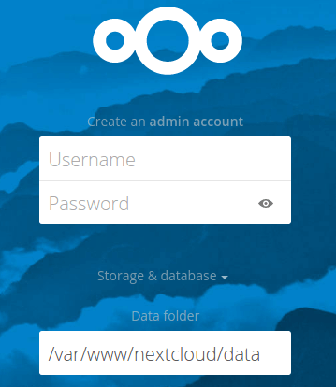
In this tutorial, we will show you how to install Nextcloud on Debian 10. For those of you who didn’t know, Nextcloud is a free and open-source cloud file sharing application (Calendar, Contacts, Documents, Email, and more). The developers at Nextcloud are doing their best to give the users a more secure platform, fewer bugs, and overall a better product. Nextcloud not only has all the features of its ownCloud but also plans to provide new and innovative ones.
This article assumes you have at least basic knowledge of Linux, know how to use the shell, and most importantly, you host your site on your own VPS. The installation is quite simple and assumes you are running in the root account, if not you may need to add ‘sudo‘ to the commands to get root privileges. I will show you the step-by-step installation of Nextcloud’s free and open-source cloud file sharing application on a Debian 10 (Buster).
Prerequisites
- A server running one of the following operating systems: Debian 10 (Buster).
- It’s recommended that you use a fresh OS install to prevent any potential issues.
- SSH access to the server (or just open Terminal if you’re on a desktop).
- A
non-root sudo useror access to theroot user. We recommend acting as anon-root sudo user, however, as you can harm your system if you’re not careful when acting as the root.
Install Nextcloud on Debian 10 Buster
Step 1. Before we install any software, it’s important to make sure your system is up to date by running the following apt commands in the terminal:
sudo apt update sudo apt upgrade
Step 2. Installing the LAMP stack.
A Debian 10 LAMP server is required. If you do not have LAMP installed, Please read our previous tutorial to install LAMP Server on Debian 10.
Step 3. Installing Nextcloud on Debian 10.
Now we download NextCloud packages from the official website of NextCloud with the following command:
wget https://download.nextcloud.com/server/releases/nextcloud-20.0.7.zip
Extract the Nextcloud packages to the document root directory on your server:
sudo unzip nextcloud-20.0.7.zip -d /var/www/html/
We will need to change some folders permissions:
sudo chown -R www-data:www-data /var/www/html/nextcloud
Step 4. Configuring MariaDB for Nextcloud.
By default, MariaDB is not hardened. You can secure MariaDB using the mysql_secure_installation script. You should read and below each step carefully which will set a root password, remove anonymous users, disallow remote root login, and remove the test database and access to secure MariaDB.
mysql_secure_installation
Configure it like this:
- Set root password? [Y/n] y - Remove anonymous users? [Y/n] y - Disallow root login remotely? [Y/n] y - Remove test database and access to it? [Y/n] y - Reload privilege tables now? [Y/n] y
Next, we will need to log in to the MariaDB console and create a database for Nextcloud. Run the following command:
mysql -u root -p
This will prompt you for a password, so enter your MariaDB root password and hit Enter. Once you are logged in to your database server you need to create a database for Nextcloud installation:
MariaDB [(none)]> CREATE DATABASE nextcloud_db; MariaDB [(none)]> GRANT ALL ON nextcloud_db.* TO ‘nextcloud_user’@’localhost’ IDENTIFIED BY ‘Your-Strong-Password’; MariaDB [(none)]> FLUSH PRIVILEGES; MariaDB [(none)]> EXIT;
Step 5. Create Apache web server for Nextcloud.
Create a new virtual host directive in Apache. For example, create a new Apache configuration file named ‘nextcloud.conf’ on your virtual server:
nano /etc/apache2/sites-available/nextcloud.conf
Add the following lines:
<VirtualHost *:80>
DocumentRoot "/var/www/html/nextcloud"
ServerName nextcloud.griyaku.lan
ErrorLog ${APACHE_LOG_DIR}/nextcloud.error
CustomLog ${APACHE_LOG_DIR}/nextcloud.access combined
<Directory /var/www/html/nextcloud/>
Require all granted
Options FollowSymlinks MultiViews
AllowOverride All
<IfModule mod_dav.c>
Dav off
</IfModule>
SetEnv HOME /var/www/html/nextcloud
SetEnv HTTP_HOME /var/www/html/nextcloud
Satisfy Any
</Directory>
</VirtualHost>
Now, we can restart the Apache webserver so that the changes take place:
sudo ln -s /etc/apache2/sites-available/nextcloud.conf /etc/apache2/sites-enabled/nextcloud.conf sudo sudo a2enmod rewrite sudo a2ensite nextcloud.conf sudo systemctl restart apache2.service
Step 6. Accessing Nextcloud on Debian.
Nextcloud will be available on HTTP port 80 by default. Open your favorite browser and navigate to http://your-domain.com/ or http://server-ip and complete the required steps to finish the installation. If you are using a firewall, please open port 80 to enable access to the control panel.

Congratulations! You have successfully installed Nextcloud. Thanks for using this tutorial for installing Nextcloud free and open-source cloud file sharing application on Debian 10 Buster system. For additional help or useful information, we recommend you check the official Nextcloud website.